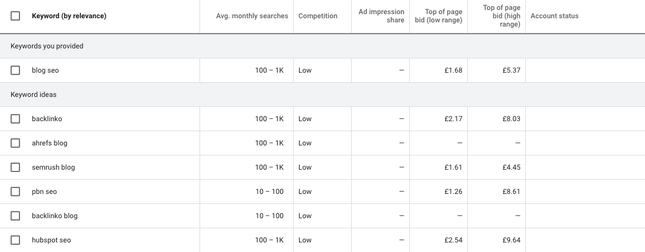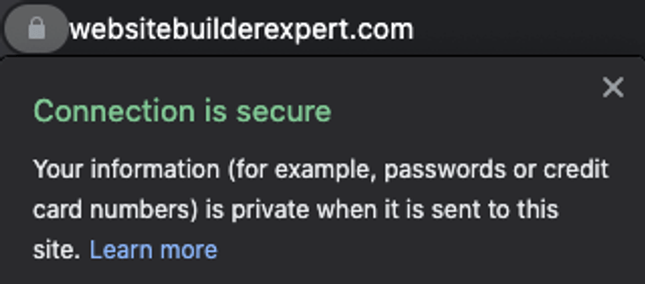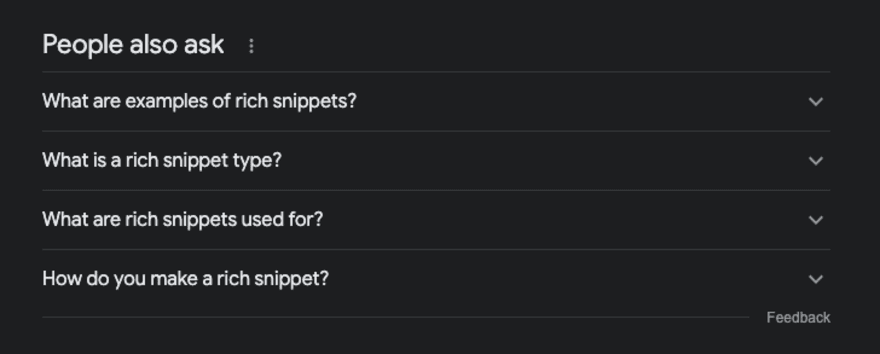11 Actionable Blog SEO Tips to Optimize Your Content for Search Engines
If you click to purchase a product or service based on our independent recommendations and impartial reviews, we may receive a commission. Learn more
There are many reasons to start a blog, from educating customers on your products and services, to affiliate marketing. But with 32.7 million competitors in the USA alone, how do you make your blog stand out from the crowd? How can you leverage SEO for your blog specifically?
The importance of getting your blog ranking on search engines probably needs no explaining – especially when you consider the fact that the first result on Google typically receives 28.5% of search engine traffic.
In this guide, we’ll provide you with 11 essential blog SEO tips to optimize your blog posts for better search engine rankings.
1. Find and Use Valuable Keywords
It’s actually very easy to rank highly on search engines – all you need to do is find a supremely obscure keyword, and optimize all your content to target it. Of course, this isn’t going to generate very much traffic – and that traffic is unlikely to be valuable!
So, before you start employing the blog SEO tips and tricks in this article, you’ll need to decide which keywords you actually want to rank for. There are three factors to consider when choosing the best keywords to target:
- Relevancy: Your target keywords need to be highly relevant to those who you want to visit your site
- Competition: It’s typically better to target keywords that have lower competition
- Traffic: How many people are actually searching for the keywords you have chosen
Get one of these wrong, and you won’t see the results you want. For example, if you target keywords that have:
- Low relevancy, low competition, and high traffic, you’ll get lots of low-value visitors to your site
- High relevancy, high competition, and high traffic, you’ll end up with high-value traffic which is very difficult to secure
- High relevancy, low competition, and low traffic, and you’ll have high-value traffic, but very little of it!
Finding the best keywords is a fairly straightforward process – when you have the right tools, that is. There are plenty of keyword tools on the market that can provide you with insights into how popular keywords are, and how difficult they are to rank for. These tools range from simple tools such as Google’s own Keyword Planner, to tools that offer a deeper look, such as SEMRush or MOZ.

2. Add Quality Internal Links
The simplest way to understand the importance of links is to think of them as a vote of confidence. When you link to another page within your blog, you’re telling search engines such as Google:
“This page is relevant to this content, and I trust that it adds additional value to what I am trying to say”.
This is why gaining external links from other sites to your site is so important, as those sites are ‘voting’ for your site as containing worthy content.
Similarly, you can include internal links within your own blog to show search engines how your content is focused on key themes, and how your blog posts are relevant to each other. As Google uses links to find content, the more internal links you use in your site, the easier Google will find it to rank your page.
However, make sure that your internal linking is relevant to the point that you’re trying to put across, as poorly considered links can lead to search engines penalizing your content.
The text you select for your internal hyperlinks will also impacrt SEO. Here are some tips for selecting the best text:
- Use descriptive and concise anchor text.
- Include relevant keywords.
- Make it compelling and clear.
- Avoid generic phrases.
- Use natural language.
- Maintain consistency.
- Don’t use text that is too long.
3. Promote and Build Backlinks
Just like how internal links are an internal “vote” for another page, backlinks from other websites are an external vote for that page. Think of it as the linking (external) website saying to Google:
“I’m linking to this page because the content on there is great.”
This is why being proactive about getting backlinks to your blogposts can be a smart idea. Here are some top tips and ideas on how to do this:
- Approach other websites and blogs about posting on their website
- Collaborate with influencers and industry experts to grow your reach
- Engage in content promotion and outreach strategies
- Participate in online forums and naturally link back to your website
4. Use Metadata
Metadata can simply be described as data about data. Your blog metadata is all the data that is usually automated behind the scene when you create a new post. Search engines use metadata to build a picture about the relevancy and key themes of content.
This means that it isn’t just what’s written on your blog which impacts how you rank on search engines. There are a large range of meta tags available to website owners – it can get a little complex.
But here are some tips on optimizing the most common tags on your website for search engines:
Meta Title
This tells the search engine what your blog is titled, and is the title that appears as a blue link on search engine result pages. Optimize this by:
- Keeping it concise (50-60 characters)
- Including relevant keywords
- Placing important keywords at the beginning
- Making it compelling
- Avoiding keyword stuffing (too many keywords)
- Being unique for each page
- Considering your branding
- Front-loading important information
- Using pipe or dash.
Meta Description
This appears underneath the meta title on the search results page, and gives users an idea what your page is about. Try these tips for optimizing your meta description:
- Keep it concise (150-160 characters)
- Include relevant keywords
- Be compelling and engaging
- Reflect the page’s content accurately
- Avoid duplicates and generic descriptions
- Highlight unique selling points or benefits
- Use action-oriented language or call-to-action
- Include specific details or statistics
- Ensure readability and grammar
- Avoid keyword stuffing
5. Optimize Images
Many people don’t fully grasp the importance of optimizing images when it comes to boosting SEO. They spend hours creating quality blog posts, just to throw a few images up with it to brighten up the readers’ experience.
But images can have a big impact on your search engine rankings.
Large, high-quality images can drastically slow down page load times. Search engines can penalize you for this, because it creates a poor visitor experience. You can optimize images for web performance by compressing the images you use, which will help speed up load times, and, therefore, positively impact how your blog posts place in Google’s search results.
You can further leverage image optimization to improve SEO specifically by taking advantage of the following techniques:
- Use images that are highly relevant to your content and add value
- Use image file names and titles to tell search engines exactly what an image is
- Use image alt descriptions to further describe an image and add context – these are also used by screen readers, meaning they make your blog more accessible to those using them
6. Secure Your Blog
Would you buy from a website that you don’t trust? Probably not. Would you regularly return to a blog and digest information if you didn’t trust that the information was authentic? Probably not!
There are lots of ways that you can boost the trustworthiness of your blog, such as fact-checking your content, and reviewing past content to ensure that it’s still accurate. But securing your website is a crucial first step!
One way you can secure your site is by getting an SSL certificate. This certificate basically shows those who visit your website who owns that site, offering transparency and further developing trust. It also highlights that there is a secure connection between their personal device and the website, which is especially beneficial in ecommerce settings.
Search engines such as Google value transparency, and will give a little boost to your site’s rankings if it has an SSL certificate.

7. Make Your Content Readable & Relevant
Over time, search engine algorithms change. This means that what is important today, might not be important tomorrow. This can be a little frustrating – particularly when you’re investing considerable time into getting your website ranking well.
However, there is one golden blog SEO tip to remember, which will pay dividends regardless of changes in algorithms:
“Publish great content”.
Search engines change their algorithms in order to serve their users with the most relevant search results. Therefore, they’re always being updated to help them find the best content. So, it makes logical sense that if your content is of high quality, then you’ll also end up with high-ranking content.
The first thing to remember when creating content is to ensure that it’s super relevant. This can be done by finding relevant topics and keywords, then creating content surrounding them.
For example, if a search engine can identify keywords and key themes that are repeated across titles, subheadings, text, and images, they’ll easily be able to identify what that content is about – and rank it accordingly.
Improving the readability of your content is also beneficial to both readers and search engines, as it makes it easier for both to find key information. You can improve readability by:
- Writing in a concise manner
- Using headings and subheadings to break up text
- Adding images that add context to your content
- Using bullet points or numbered lists to highlight key information
- Incorporate keywords in a natural way
- Include a compelling introduction and conclusion
- Create long form content (aim for 1,000 or more words)
We’d also recommend using a tool such as Google Analytics – make sure you set up GA4, the latest version. Through this, you can monitor how well your content is performing in terms of conversions, bounce rate, the time your users spend on the page, and the amount of traffic your site’s getting.
To get to grips with setting all this up, check out our guide to how to add Google Analytics to a website.
8. Be Original
Duplicating content is a bad move when it comes to SEO. This is even true if you own the content and have every right to republish that content elsewhere. There are three main reasons why duplicating content is a bad idea:
- Search engines don’t know which content was the original and should be included in their indices
- Search engines don’t know whether to direct the link metrics to one page or split it between the multiple versions
- Search engines don’t know which version to rank in search results
As duplicate content tends to confuse search engines, when it occurs it will typically damage the rankings of all versions.
So, when you’re creating blog content, you should keep it original to avoid future complications!
9. Use Schema Markup and Rich Snippets
Schema markup is basically a special type of vocabulary which is used to provide search engines with additional information about your blog post content. It is used by the search engine to understand the context and meaning of the content, allowing them to enhance search results with rich snippets.
A rich snippet is a search result which offers more information than the usual URL, title, and description of a page. One good example of this is the “People also ask” section on search results where you can view specific content from a webpage which answers your question.

Being included in the rich snippet sections of search results can drastically improve your websites visibility, because they usually appear right at the top of the search engine result page.
To implement structured data:
- Identify the relevant structured data schema for your content
- Add it to your webpages following the guidelines provided by schema.org
10. Promote Engagement
This is one blog SEO tip you’re probably doing already, which is encouraging engagement on your blog! But did you know that engagement in your content will help boost your search engine rankings too? This is achieved in several different ways, ranging from user comments adding additional context, all the way through to the knock-on impact of engaged users being more likely to share or link to your content.
Here are some tips on promoting engagement on your blog content:
- Optimize your website navigation to make it easier for visitors to find relevant content
- Encourage comments and discussion on your blog posts
- Offer content suggestions which are related and relevant
- Ensure fast and responsive website performance
Find Out More
Engagement can extend beyond your blog posts and pages! You can also share on social media to engage readers off-site too. Our guide on How To Promote Your Blog on Social Media walks you through sharing on different platforms.
11. Regularly Update and Maintain Your Blog
Search engines like Google love fresh content. Why?
Because they want to serve their users with the best and most relevant information. So, it stands to reason that the more up to date your information is, the more likely Google is to rank it highly.
Let’s put it this way. If you are looking for a how to guide on that frustrating new bit of HR software you just purchased, would you want a walk through that was published in the last few weeks, or one that was created back in 2014?
The older content may not cover all the most recent features on the software and may contain advice which is no longer considered best practice. Whereas the newer content is more likely to offer advice which is up to date and relevant.
Fresh content doesn’t just mean publishing new blog posts all the time (although you should certainly do this). It also means going back to old, popular blog posts and updating them in-line with new information such as stats, discoveries, changing trends, and best practices. We walk you through website updates in our dedicated guide.
When reviewing your content, you will also want to ensure that any broken links are fixed, since this can also impact your search engine rankings. Using a free tool such as this one can help you quickly and easily check your website for broken links.
Optimizing Your Blog for Search Engines
In this article, we’ve armed you with 11 powerful blog SEO tips to boost your search engine rankings. It’s important to remember that obtaining good, consistent rankings is a journey, and should be worked on over time.
Plan regular reviews to identify what is and isn’t working for you when it comes to boosting your blog’s SEO, and remember – keep publishing high-quality content, and you can’t go wrong!

Leave a comment